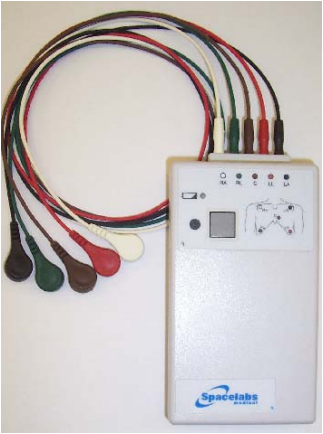Cardiac telemetry
What is cardiac telemetry?
Cardiac telemetry (te-leh-meh-tree) can measure heart rhythm and rate continuously while your child is a patient at the hospital.
How is it done?
Patches or electrodes are placed on your child's chest. Wires (usually called "leads") are then attached to the patches and connected to a small box.
A picture of your child's heartbeat is sent to a monitor in the Cardiovascular Care Center (CVCC), where staff will review the electrical tracings of your child's heartbeat and rhythm. If anything is abnormal, the doctor will talk with you about what it is and what it means.
How should I prepare my child?
Explain in simple words how the monitoring is done. Tell your child that the monitoring does not hurt. Answer as many questions as you can. For example: "Patches will be placed on your chest. They may feel a little uncomfortable, but will not cause any pain. Soft wires will be attached to the patches and connected to a small box that you will wear. You can still move around and play. A picture of how your heart is beating will show on a screen. This will help your doctor decide how to help you."
What else do I need to know?
The patches, wires, and small box must stay connected at all times. If anything comes loose, tell the nurse. Sometimes patches may need to be moved slightly or replaced to get a better reading.

Your child may walk around, but should not leave the unit. This is so the transmitter can pick up the signals.
Questions?
This sheet is not specific to your child but provides general information. If you have questions about cardiac telemetry, please contact your child's nurse or doctor.
Children's Hospitals and Clinics of Minnesota
Patient/Family Education
2525 Chicago Avenue South
Minneapolis, MN 55404
Last reviewed 8/2015 ©Copyright
This page is not specific to your child, but provides general information on the topic above. If you have any questions, please call your clinic. For more reading material about this and other health topics, please call or visit Children's Minnesota Family Resource Center library, or visit www.childrensmn.org/educationmaterials.
© 2024 Children's Minnesota
